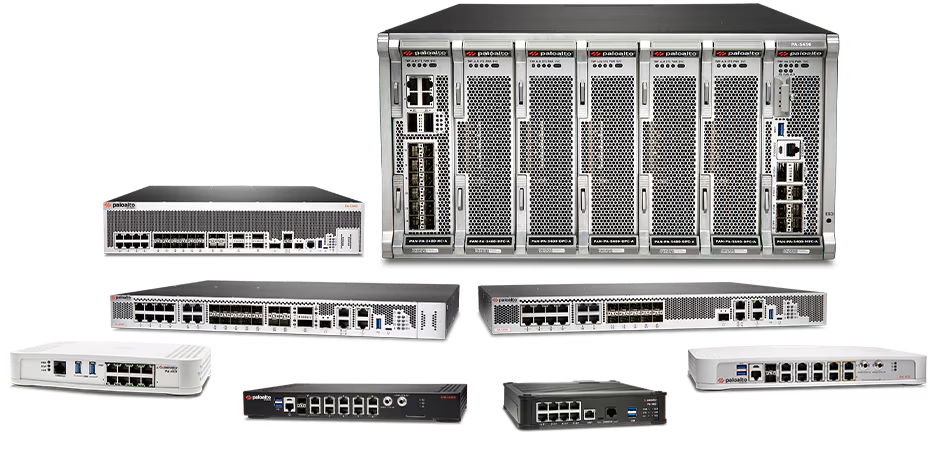Palo Alto Networks firewalls are widely recognized for their advanced capabilities and user-friendly interface. Whether you’re just getting started with a PA-Series appliance or a virtual firewall in the cloud, this guide will walk you through the basic setup and configuration steps—perfect for beginners entering the world of Palo Alto firewalls.
What Makes Palo Alto Firewalls Unique?
Unlike traditional firewalls that filter traffic based on ports and protocols, Palo Alto firewalls offer deep packet inspection and App-ID, User-ID, and Content-ID technologies. This allows for application-aware, user-aware, and threat-aware policies—providing next-generation security without complexity.
Initial Access: Connecting to the Web Interface
-
Connect your laptop to Management Port
-
Set your laptop to a static IP in the 192.168.1.0/24 range
-
Open a browser and go to
https://192.168.1.1 -
Login with default credentials:
-
Username:
admin -
Password:
admin
-
⚠️ You’ll be prompted to change the password on first login—do this immediately.
Step-by-Step Basic Configuration
1. Change Admin Password
-
Go to Device > Administrators
-
Edit the
adminaccount -
Set a strong password
2. Configure Interfaces
-
Navigate to Network > Interfaces
-
Select the interface (e.g.,
ethernet1/1) -
Set interface type to:
-
Layer3 (for routed traffic)
-
-
Assign to a Security Zone (e.g.,
LAN,WAN) -
Click IPv4 > Static, and assign an IP address
Repeat for all required interfaces (internal and external).
3. Create Security Zones
-
Go to Network > Zones
-
Add zones such as:
-
LANfor internal traffic -
WANfor internet-facing traffic -
DMZfor publicly accessible servers
-
Zones help apply granular policies.
4. Assign Interfaces to Virtual Router
-
Go to Network > Virtual Routers
-
Use the default or create a new one
-
Add all interfaces to the virtual router
-
This allows the firewall to route traffic between interfaces
5. Configure NAT (Network Address Translation)
To allow internal users to access the internet:
-
Navigate to Policies > NAT
-
Create a new rule:
-
Source Zone: LAN
-
Destination Zone: WAN
-
Source Translation: Dynamic IP and Port
-
Interface: WAN interface
-
IP Address: WAN IP (interface address)
-
6. Create Security Policies
Now define rules to allow or block traffic.
-
Go to Policies > Security
-
Add a rule:
-
From: LAN
-
To: WAN
-
Source: Any or specific subnet
-
Destination: Any or specific IPs
-
Application:
web-browsing,ssl, etc. (orany) -
Action: Allow
-
Place deny all rules at the end if not already present.
7. Commit Configuration
-
Click the Commit button at the top right
-
This applies all changes to the running configuration
8. Enable Logging
For visibility:
-
On each security rule, go to Actions
-
Enable Log at session end
-
View logs at Monitor > Traffic
Bonus Tips for Palo Alto Beginners
-
Use Objects > Address Groups for reusable IP sets
-
Use Objects > Applications to apply App-ID-based rules
-
Keep your firewall updated via Device > Software
-
Download threat definitions under Device > Dynamic Updates
Final Thoughts
Palo Alto firewalls provide robust, intelligent protection, and once you get familiar with their web interface and terminology, configuring them becomes straightforward. From zone-based security to application-layer control, even basic configurations offer high levels of visibility and control.
Whether you’re a student, IT technician, or new network admin, mastering these basics is your first step toward advanced network security.
